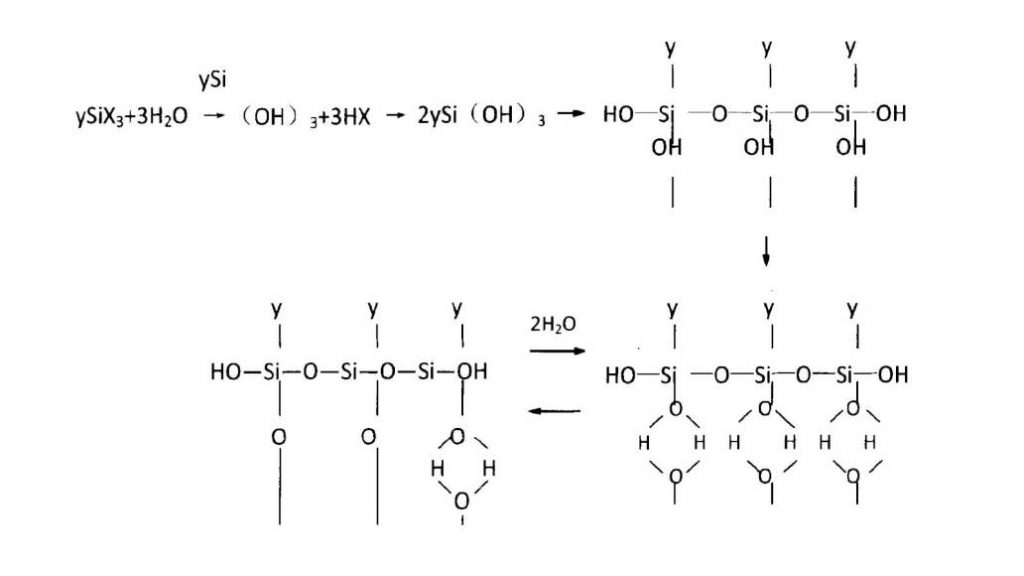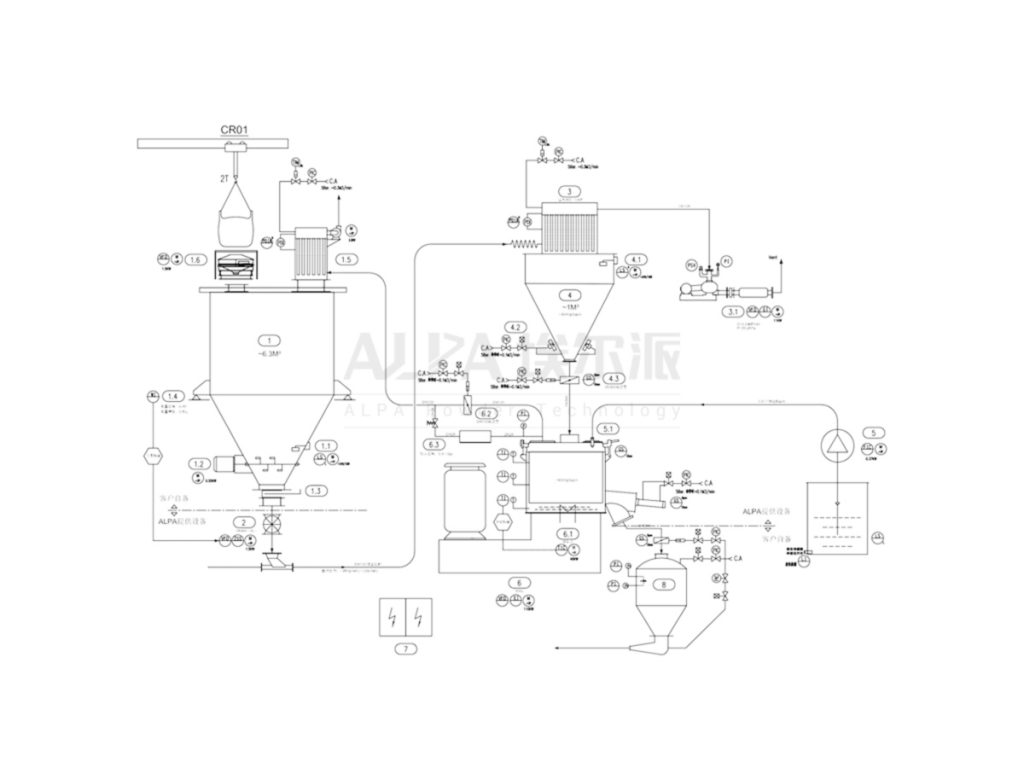Surface modification has important practical significance for improving performance of powder, increasing its practical value and opening up application fields. In plastics, rubber, adhesives and other polymer materials and composite materials, non-metal powder fillers, such as calcium carbonate, kaolin, talc, quartz, wollastonite, asbestos, magnesium hydroxide, aluminum hydroxide, etc., must be surface modified to enhance its compatibility with the matrix, dispersibility, mechanical strength and comprehensive performance. The most commonly used modification methods include surface chemical modification, coating modification, and mechanochemical modification.
Why does silica powder (ultrafine quartz powder) need Surface Modification?
01
Silica Powder surface modification process
The dry coating of silica powder (ultrafine quartz powder) is generally completed with a high-speed mixer.
Generally speaking, the finer the particles of quartz powder, the larger the specific surface area, and the more surface active hydroxyl groups, the easier it is for chemical reactions, and the better the effect after coating. After silicate minerals such as quartz are mechanically milled, free radicals or ions are generated on the new surface. Under the action of external conditions, the surface generates Si-OH, Si-O-Si and Si-OH···H groups. It is easy to bond with foreign functional groups to achieve the purpose of modification and provide a basis for surface modification. In the modification process, temperature, modifier selection, dosage and treatment method, modification process are the main factors that affect the modification effect.
Principle and characteristics: intermittent batch work. Suitable for silanes and other additives to modify materials with high temperature and long reaction time. It is equipped with heating and timing devices, and the modification temperature and time are controllable. The inner lining can be made of ceramic materials, with none metal pollution.



Silica Powder Modifier
The modifiers for silica powder mainly include silane coupling agent, aluminate coupling agent, titanate coupling agent and so on. Fatty acids and some cationic surfactants (such as cetyltrimethylammonium bromide, etc.) are commonly used in industry to modify the surface of quartz powder. These modifiers are inexpensive and simple in process, but the coating effect is average.
Silane coupling agent
Silane coupling agent has the best effect on surface modification of quartz powder, but the cost is higher. The cost of aluminate and titanate coupling agents is lower and the modification is easier, but the modification effect is worse than that of silane coupling agent. The reason is that the silane coupling agent and the silicon hydroxyl group on the surface of the quartz powder require high energy for shrinking and bonding, while the Al3+ and Ti3+ in the aluminate and titanate coupling agents have large radii and are easy to associate with the silicon hydroxyl group. Bonded on the surface of quartz powder, the bond level is lower than the Si-O-Si bond, the effect is not as stable as the modified silane coupling agent.
Aluminate and titanate coupling agent
When using aluminate and titanate coupling agents to modify the quartz powder, the hydrolysis of the coupling agent is almost impossible to add water, otherwise it is easy to shield the coupling agent and form an emulsion, which is most effective when dissolved in an organic solvent. Such as toluene, acetone, etc. If the silane coupling agent does not hydrolyze, it is difficult to bond with the surface of the quartz powder.
Development Trend of Surface Modification of Silica Powder (Ultrafine Quartz Powder)
At present, the particle size requirements for coated quartz powder tend to be ultra-fine. Nano-quartz powder has a three-dimensional network structure with superior stability, thickening, thixotropy, electrical insulation, absorption and polishing properties. Performance, unique characteristics in many application fields, has irreplaceable role and has good development prospect. But it is very easy to reunite, there are a large number of active points on the surface, and it is easy to adsorb various atoms and molecules. Due to its good light transmittance and infrared reflectivity, it is widely used in films, coatings and other fields. However, the preparation of nano-quartz powder is more expensive than micron-level and the market demand is large.
For different application fields, requirements for coated quartz powder are different. For plastic film, the particle size of quartz powder is required to be high. If the particle size is too large, the film cannot be blown and the mechanical properties of the film will be greatly reduced. With different modifiers, the filled polymers will also be different, because the degree of compatibility of different chemical groups varies greatly. For example, after the coupling agent with alkenyl group and chlorohydrocarbon group is modified, the quartz powder is filled in a large amount in PE and after being modified by the coupling agent with polysulfide hydrocarbon group, it is filled in a large amount in rubber. With the development of science and technology, the modification technology of quartz powder will become more industrialized, simpler and more efficient. The versatility of the modifier will be enhanced, the application range will be wider, the cost will be lower, and the modification effect will be better.
Due to the characteristics of quartz powder, application value in various industries is extremely high, it will be better developed in the development of science and technology and social life in the future. With the increase of social demand, the development of technology. The particle size of quartz powder will become smaller and spherical. The preparation technology of ultrafine quartz powder will be more reasonable and economical, application value of the quartz powder itself will be greatly improved. With the continuous improvement of production equipment, high-end modification technology will become more industrialized, which will greatly expand its application fields. In short, quartz powder modification research has achieved significant results, and it will shine in some unknown applications in the future.

